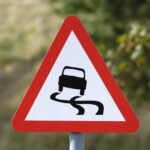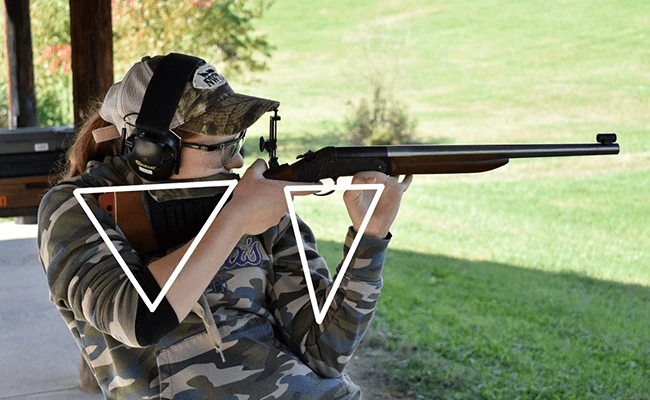The best weapon to defend against a dog attack is pepper spray. It’s a non-lethal option that can deter an aggressive dog by causing temporary discomfort. Aim for the dog’s eyes and nose. If that’s not available, a stick or any long object can help keep the dog at a distance. Never use excessive force or lethal weapons unless your life is in immediate danger. Prioritize non-lethal methods and remember to stay calm, avoid provoking the dog, and try to back away slowly. In any case, your safety is the top priority, so use the best available means to protect yourself without causing unnecessary harm to the animal.
Types of Dog Attacks
Territorial Aggression
This occurs when a dog perceives its home or yard as its territory and feels the need to defend it from intruders. The dog may bark, growl, or even attack when someone enters its perceived territory.
Protective Aggression
Dogs can become protective of their owners, especially in situations where they sense a threat. This may manifest as aggression towards strangers, other animals, or anyone who appears to be a potential danger.
Fear-Induced Aggression

When a dog feels threatened or cornered, it may resort to aggression as a means of self-defense. This is common in situations where the dog believes it has no other escape route.
Predatory Aggression
Some dogs have a strong predatory instinct, which can be triggered by smaller animals, such as squirrels or cats. They may chase, catch, and potentially harm these animals.
Social Aggression
Dogs living in multi-dog households or within a group may display aggression when competing for resources, attention, or dominance. This can result in fights among the dogs.
Pain-Induced Aggression
Dogs that are in pain due to illness or injury can become aggressive when touched or approached. Their pain makes them more likely to lash out defensively.
Common Triggers for Dog Aggression
Unfamiliar People or Animals: Dogs are often more cautious and may react aggressively when encountering individuals or animals they don’t know. This is a natural protective instinct.
Invasion of Personal Space: Dogs have a personal space or “bubble.” Approaching a dog too quickly, especially if the dog is not familiar with you, can make them uncomfortable and potentially lead to aggression.
Provocation: Deliberately teasing, hitting, or otherwise mistreating a dog can provoke an aggressive response. Dogs should always be treated with kindness and respect.
Fear or Anxiety: Dogs experiencing fear or anxiety are more likely to display aggression as a way to cope with their perceived threat. This is why it’s essential to create a safe and comfortable environment for your dog.
Maternal Instinct: Female dogs with puppies can exhibit extreme protectiveness. They may become aggressive when they feel their offspring is in danger.
Risks and Consequences of a Dog Attack
Physical Injury: Dog attacks can result in various types of injuries, from minor bites and scratches to severe wounds, muscle and tissue damage, and even broken bones.
Infection: Dog bites can introduce harmful bacteria into the victim’s body, increasing the risk of infection. Proper medical attention and wound care are essential to prevent complications.
Emotional Trauma: Victims of dog attacks often experience emotional trauma, including fear, anxiety, and post-traumatic stress disorder (PTSD). This can have long-lasting effects on their well-being.
Legal Consequences: Dog owners can be held legally responsible for damages caused by their aggressive dogs. This includes covering medical bills, rehabilitation costs, and compensation to the victim.
Euthanasia: In severe cases where a dog poses a significant threat to public safety and has a history of aggression, euthanasia may be considered as a last resort to prevent future attacks.
Which Self-Defense Weapons Are Most Effective and How to Choose Them?

The choice of the best self-defense weapon depends on various factors, including your comfort level, training, and the specific threats you may face. Common self-defense options include pepper spray, personal alarms, batons, and, in some cases, firearms
Pepper Spray: How and When to Use It
Pepper Spray Use: Pepper spray is a chemical agent that can cause temporary blindness, intense burning, and respiratory distress in an attacker. To use it effectively, aim for the attacker’s face, particularly the eyes and nose. Be aware of the spray’s range and practice using it to ensure accuracy.
When to Use It: Pepper spray should be used when facing an immediate threat to personal safety, such as an aggressive person or an approaching assailant. It can provide an opportunity to escape from the danger. However, avoid using it in windy conditions, as it may blow back into your own face.
Personal Alarms and Deterrents
Personal Alarms: Personal alarms emit a loud, attention-grabbing sound when activated. They are effective for drawing attention to a dangerous situation, potentially deterring an attacker, and alerting nearby people to your distress. Attach them to your keychain, bag, or clothing for quick access.
Deterrents: Some self-defense deterrents, like noise-emitting devices or high-intensity flashlights, can disorient or discourage an assailant without causing physical harm. They are useful in situations where you want to create a distraction and avoid direct confrontation.
Sticks and Batons for Protection
Sticks and expandable batons can be used to maintain distance from an attacker. To use them effectively, you should receive proper training in their deployment and techniques.
Always be aware of local laws governing the possession and use of such items. Using them without training may not be safe or effective.
Considerations for Firearms (If Applicable and Legal)
Firearms are potentially lethal self-defense tools and should be treated with the utmost responsibility.
If you choose to carry a firearm, ensure you have the necessary permits, training, and familiarity with the laws in your jurisdiction.
Only use a firearm as a last resort when facing a life-threatening situation, and always prioritize safety above all else.
Choosing the Right Weapon for Your Situation
Individual Factors: The choice of a self-defense weapon depends on individual factors, including your comfort level, training, and the specific threats you may encounter. Consider your environment, your daily routines, and the legal restrictions in your area when making a decision.
Non-Lethal Options: Whenever possible, prioritize non-lethal self-defense options to minimize the risk of causing serious harm. Non-lethal tools like pepper spray and personal alarms are effective and carry fewer legal and ethical considerations.
FAQ
What gun is used to ward off dogs?
Using a firearm against dogs should be a last resort and may not be legal in many areas. If necessary, a handgun or shotgun can be used to ward off aggressive dogs, but it’s vital to prioritize safety and follow applicable laws.
Are dogs scared of guns?
The sound of gunfire can startle dogs and may deter them from approaching, but it’s essential to avoid using firearms against dogs unless there is a genuine threat and it’s legal to do so.
Will pepper spray stop a dog fight?
Pepper spray can be effective in breaking up a dog fight by creating discomfort and temporarily deterring the dogs. However, it should be used cautiously to avoid harming the animals.
Will an air horn stop a dog fight?
An air horn can startle and distract dogs during a fight, potentially causing them to disengage. However, it may not work in all situations, and it’s crucial to prioritize safety when intervening in dog fights.
Will water stop a dog fight?
Pouring water on fighting dogs can disrupt their focus and make them separate, but it may not be a foolproof method. Safety measures should be taken when attempting to stop a dog fight.
Can a Taser stop a dog?
A Taser can be used as a last resort to stop an aggressive dog, but it should only be used if there is an immediate threat to your safety. Use it cautiously and follow local laws.
Are dogs afraid of stun guns?
Stun guns can startle and deter dogs if used properly, but they should be a last resort for self-defense. It’s important to prioritize safety and consider alternative methods of deterring dogs before using stun guns.
Final words
On the whole, when it comes to defending against a dog attack, knowledge is your best weapon. Understanding the types of dog attacks, the common triggers for dog aggression, and the potential risks and consequences is vital for your safety and the well-being of both humans and dogs.
While we hope you’ll never have to use this knowledge, being prepared and practicing responsible dog ownership can help keep everyone safe. Remember, prevention, understanding, and respect for these amazing animals are key to avoiding dangerous situations. Stay safe, stay informed, and share this knowledge with others to promote responsible dog interaction in your community.











